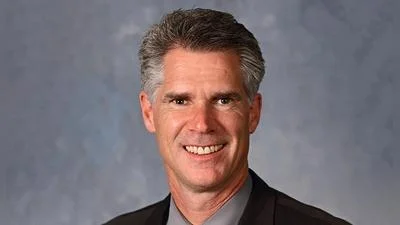Rep. David Friess (R-Red Bud) | Photo Courtesy of David Friess
Rep. David Friess (R-Red Bud) | Photo Courtesy of David Friess
Rep. David Friess (R-Red Bud) and Sen. Terri Bryant (R-Murphysboro) recently toured the Baldwin Power Plant and discussed rising energy bills and future projects.
“Well, it was a very busy day,” Friess wrote on Facebook. “Terri Bryant and I spent some time at Baldwin Power Plant. We discussed the projected increase to everyone’s energy bill, the reliability of the grid and future projects.”
The Baldwin Power Plant uses coal.
An essay in Energy News on June 15 detailed a “growing faith” that clean energy will pick up.
“The coal economy that has sustained (communities across Southern Illinois) is in a seemingly inevitable decline, as the world pivots to cleaner power sources. Places like Marion could fade, too, as people and opportunities migrate elsewhere, or the people who call them home will help reinvent their economies.
“For years, Illinois clean energy advocates, community leaders and legislators have tried to shepherd a ‘just transition’ from coal to clean energy, with programs and legislation aimed at sparking solar and other jobs in the areas most affected by fossil fuels’ decline. That transition is happening slower than some would like in Southern Illinois, which faces greater cultural, economic and regulatory barriers than other parts of the state.”
Forbes reported that Vistra Energy is closing Baldwin Power Plant in 2027.
A power plant auction could mean big things for Illinois power producers.
Bloomberg reported that “suppliers to the grid stretching from New Jersey to Illinois will find out on June 21 whether their bids to provide backup capacity for the year starting June 2023 passed muster. If they bid low enough to win a contract, a big chunk of their revenue is locked in. If high operating costs meant their bids were too pricey, some plants serving the PJM Interconnection LLC grid might decide it’s no longer viable to churn out power. Nuclear plants backed by subsidies, new natural gas plants and many renewable-power facilities are the most likely to fall into that first camp — auction winners — given lower costs. Older, less efficient plants, including some coal plants that didn’t lock in cheap fuel contracts, are likely to land in the second, putting them at higher risk of shutting down.”
The Union of Concerned Scientists wrote that burning coal causes health problems ranging from asthma to brain damage and contributes to the greenhouse effect.
The PEW Trust also reported recently on power plants in the state, and how renewables and nuclear plants could potentially function together.
Illinois lawmakers passed a climate bill last year that included a commitment to keep two of the state’s nuclear plants online for five years, even if they are losing money. The state gets more than half of its electricity from nuclear generation, and state leaders said keeping the plants open will buy more time to transition to wind and solar.
“We can build enough renewables and storage to replace those plants, but it will take years,” said Jack Darin, director of the Illinois chapter of the Sierra Club. “(If nuclear plants shut down), we would see increased utilization of the existing very dirty coal plants, primarily in communities of color, and we would see huge advantages for natural gas to come in.”





 Alerts Sign-up
Alerts Sign-up